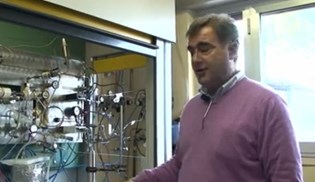ITER NEWSLINE
-
Fusion research benefits society (3/4)
Fusion research benefits society (3/4)
Developing fusion science, engineering and technology to a point where fusion energy can be supplied to the grid is one of the most exciting challenges of the 21st century, and potentially one of the most rewarding.
Newsline has been featuring a series of videos that highlight the small and large advances that are being made daily. Improvements in industrial processes, new materials, innovative remote handling technologies, computer modelling techniques ... these products of fusion R&D at the cutting edge of science and technology are not only benefitting the fusion development effort, but also society at large through spinoff technologies.
This third video produced by the European Commission opens the doors to ENEA, a research institute in Italy that is developing high-performance membranes that separate out tritium from fusion reaction-rejected mixtures. The capabilities of their palladium-silver-alloy membranes have demonstrated applicability in areas beyond fusion research. ENEA is currently part of an innovative collaboration to produce hydrogen from olive mill waste water.
Click here to view the video...
Many more videos are available on the ITER video page...
return to the latest published articles







